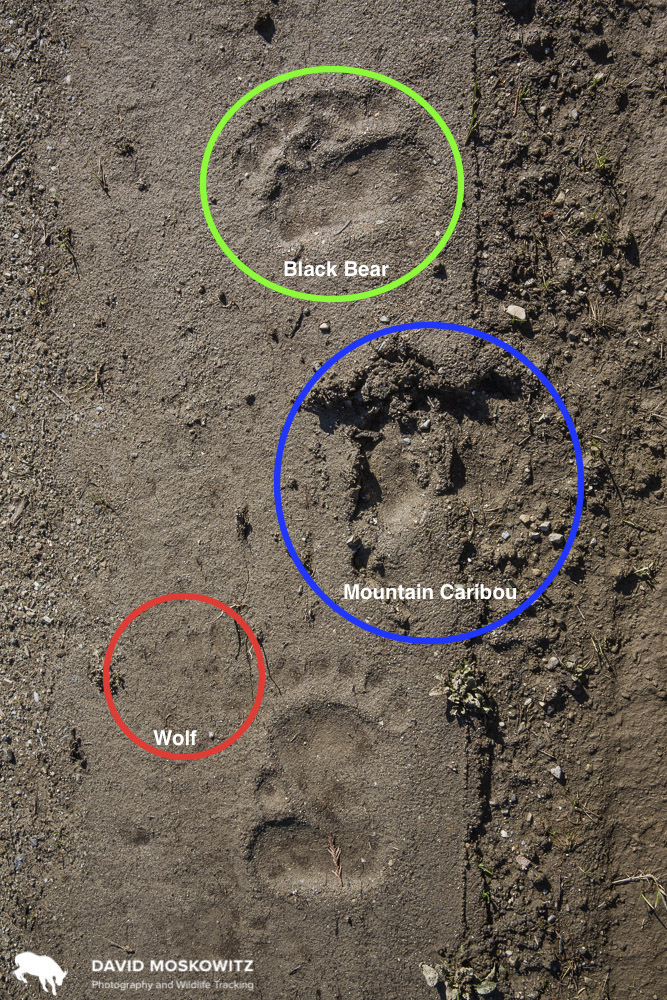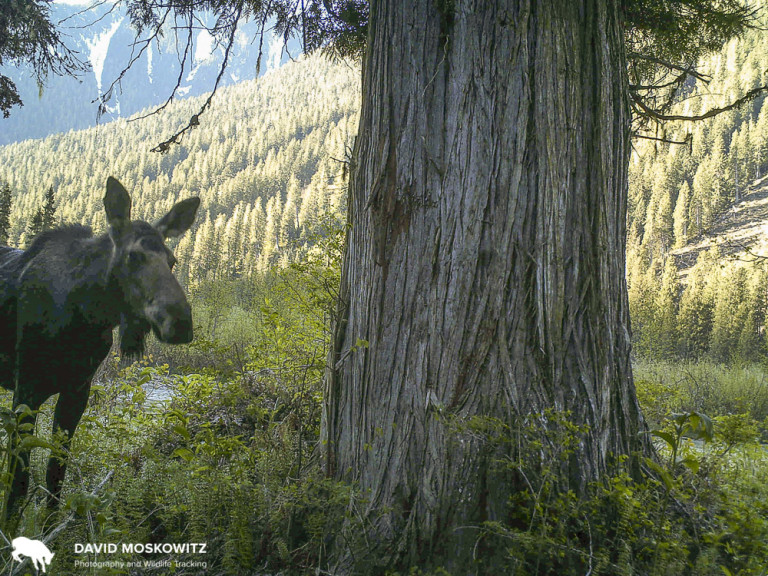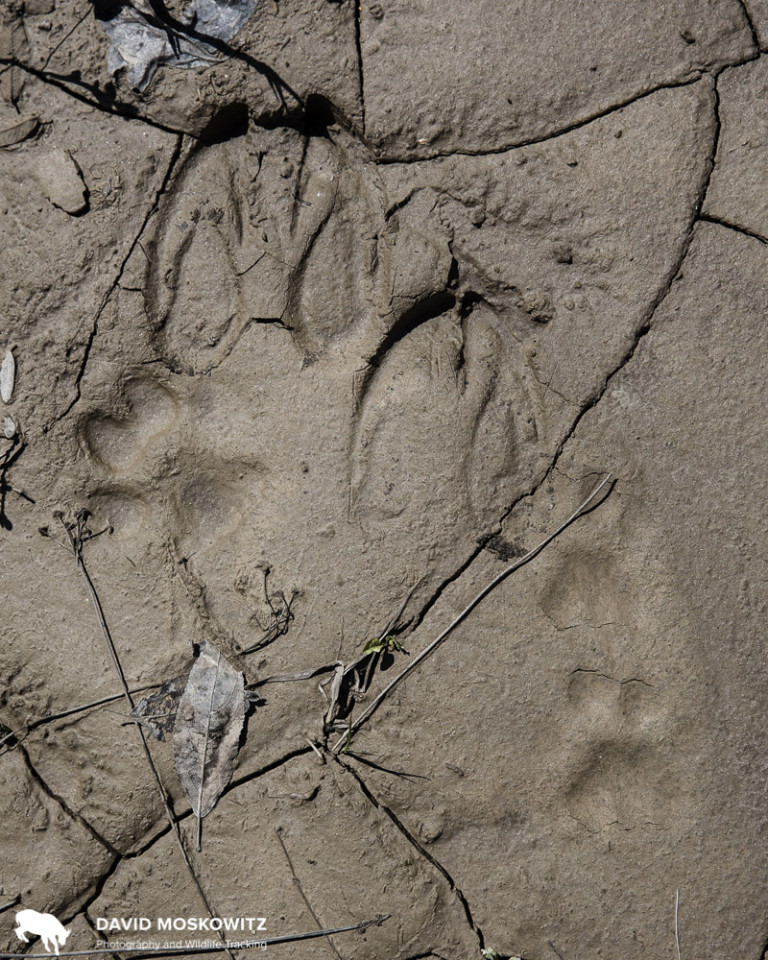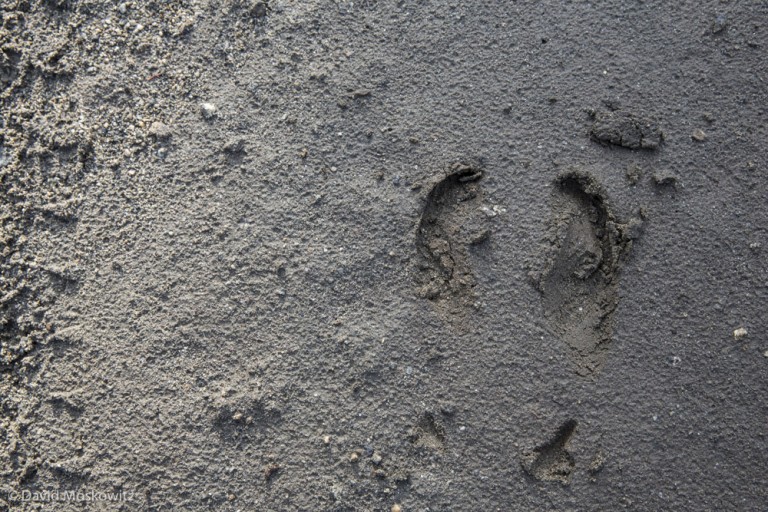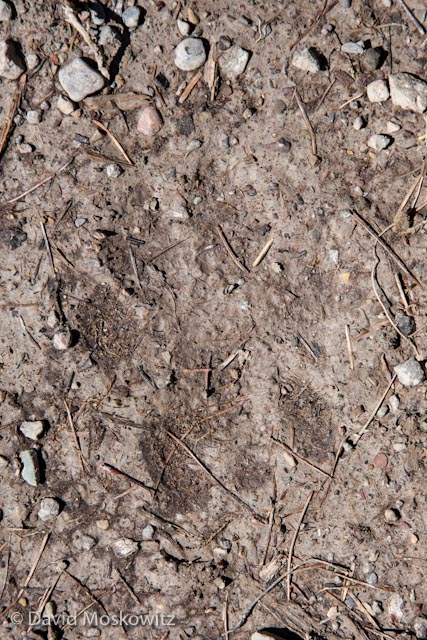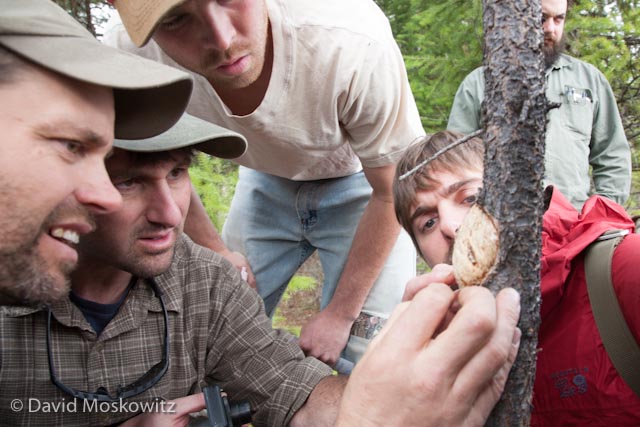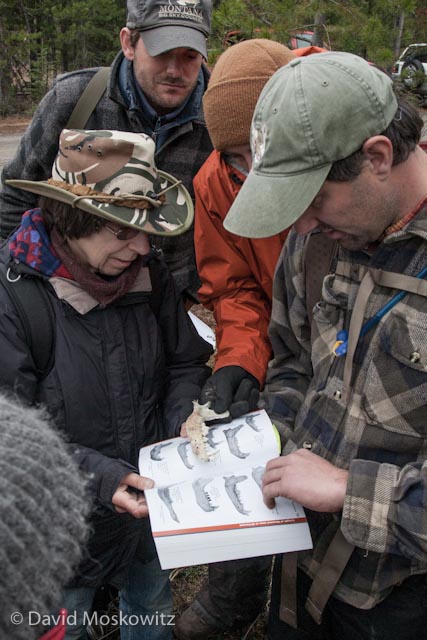Spring In Mountain Caribou Country
Text and photos by David Moskowitz
With the onset of warmer weather and longer days the snowpack is receding quickly at lower elevations while deep snows persist in the high country where mountain caribou spent the winter. In April, caribou from the North Columbia herd descend down to the valley bottom along the dammed Columbia River to feed on fresh growth. A trip that was once made through continuous stands of old growth rainforest is now a tour of clear-cuts, regenerating forests, and patches of old forest, ending with a swim across the hydropower reservoir.
For the third year in a row, the non-profit Revelstoke Caribou Rearing in the Wild (RCRW) is looking after about a dozen pregnant female caribou from the North Columbia herd, in a large enclosure they built close to a remote section of the reservoir. Similar to the Klinse-za project further north, the goal of the RCRW is to increase the survival rate of calves during the critical period when as newborns they are most vulnerable to predators. While only a small part of what is needed to restore caribou in the region, this project has brought together the region's diverse groups for a cause they can all agree on. This collaboration will hopefully yield better working relationships during more contentious conservation efforts.
RCRW has pulled all the stops to make sure their guests are safe and well fed. Len Edwards, one of the “shepherds” charged with monitoring the captive caribou, walks the perimeter fence each morning to make sure the fence is intact. Besides a tall visual barrier, multiple strands of electrified wire ensure that predators stay out of the large enclosure where the caribou roam.
As always, a continuous stream of logs continues to flow out of this region, feeding BC’s powerful timber industry. The bears are out of their dens and looking for food in melting avalanche chutes and wetlands along riparian zones.
A story in footprints: Tracks found on the access road coming out of the above cut-block. The footprint of a mountain caribou is joined by the trail of a large black bear and the faint prints of a grey wolf. Wolves are effective predators of adult caribou, while black bears and grizzlies can take a massive toll on calves–the reason for the penning project going on in the nearby mountains.
A moose captured on a camera trap I set up to monitor the rainforest’s wildlife. Dense forest and thick brush make spotting wildlife difficult. The bright patch on this large, creek-side cedar tree is from the biting and rubbing of bears. Moose use the dense riparian forest as refuge, and venture out into clearcuts and logging roads to forage on the abundant brush growing in these openings.
Another story in footprints. The tracks of a moose, a wolf, and a mountain lion. Moose populations, driven by logging, drive predator populations which in turn affect endangered caribou, leaving a tangled web of ecological relationships tricker to pick apart than these maze of footprints the animals themselves leave behind.






